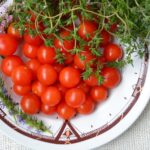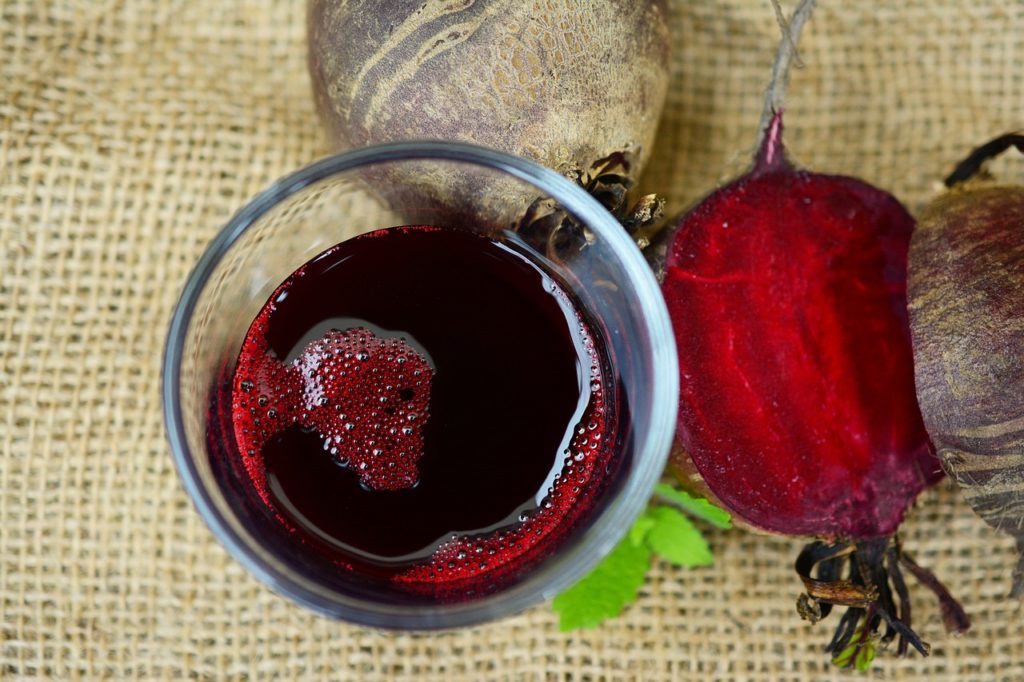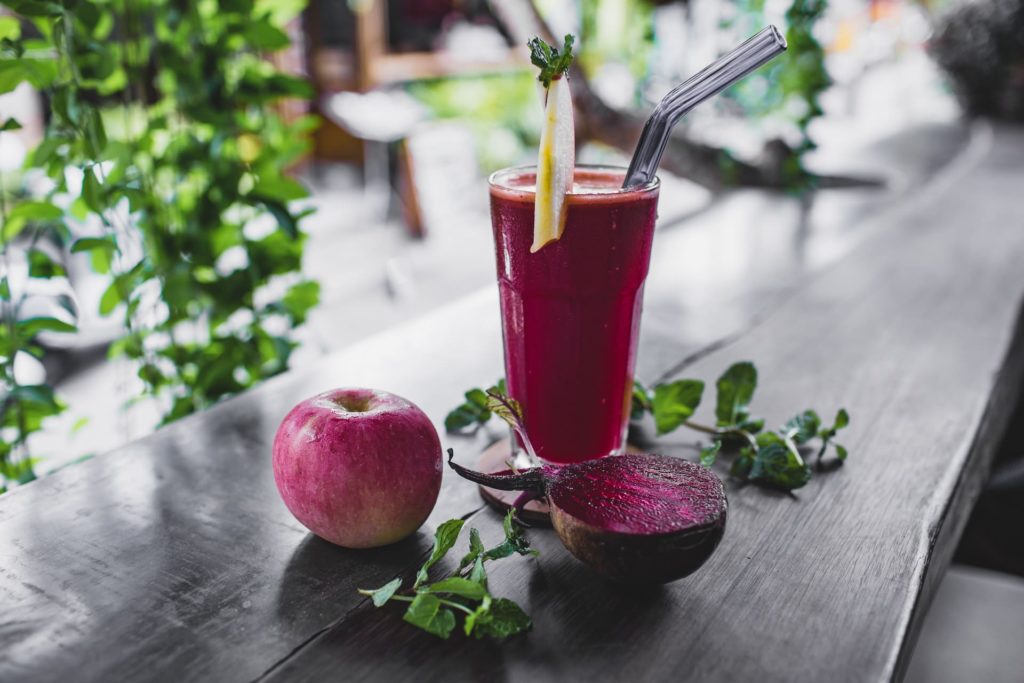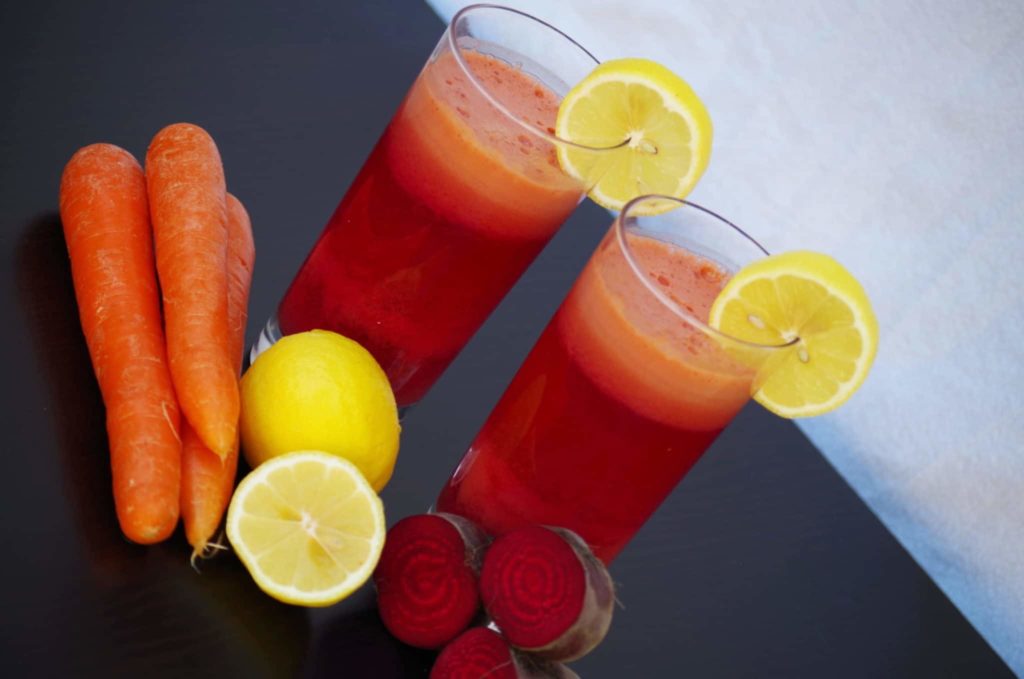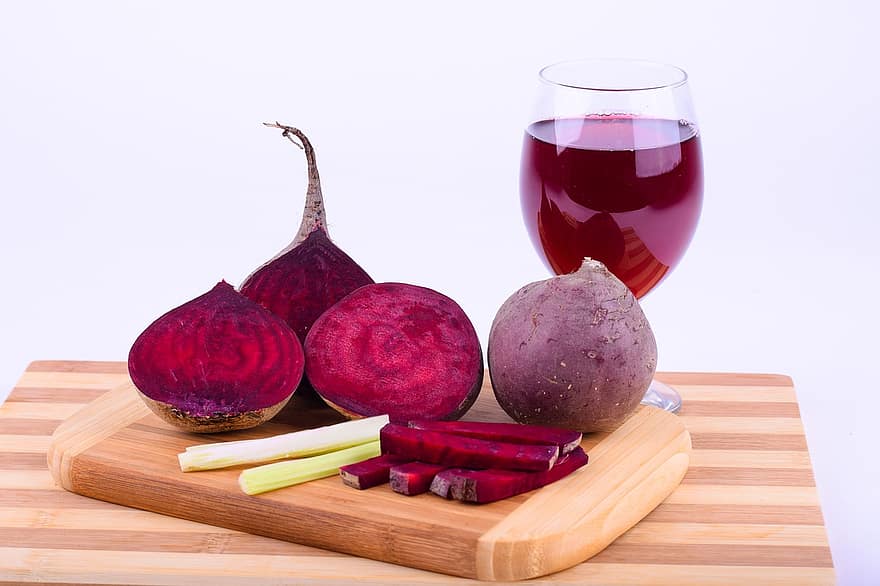Our immune system is responsible for defending the body against infections. However, you can boost your body’s infection-fighting ability by eating bell peppers, garlic, ginger, horseradish, kale, lemons, onions, spinach, tomatoes, and turmeric. These ten foods will help your immune system keep infections and pathogens at bay, and they are even easy to grow yourself.
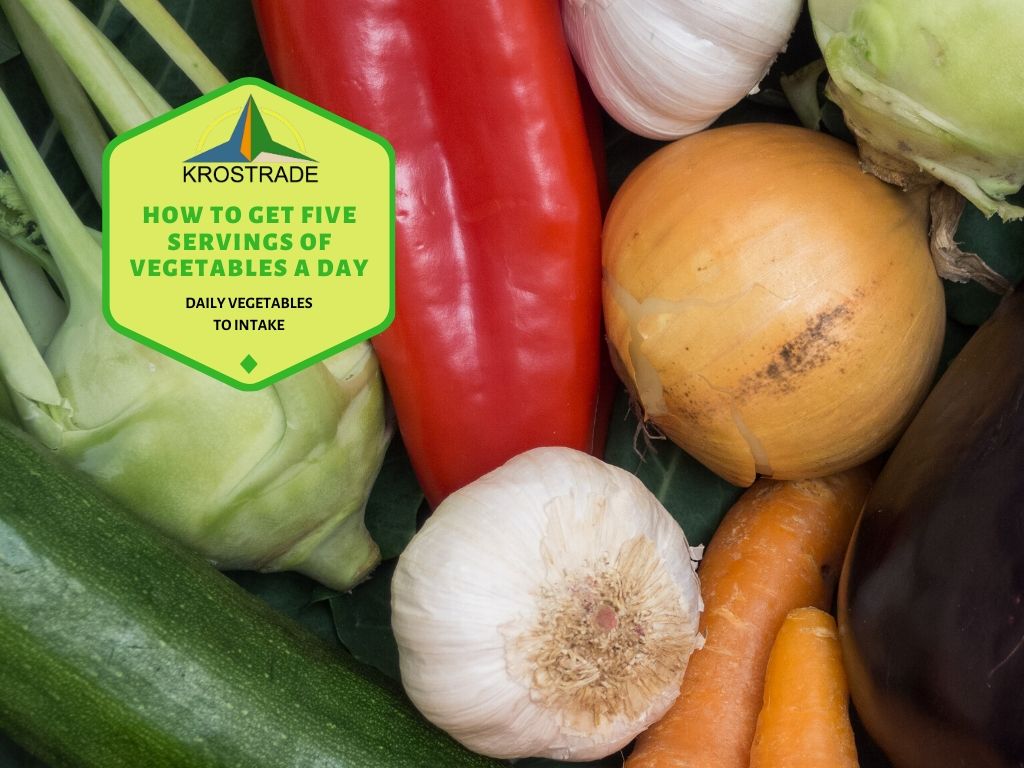
Bell Peppers
Did you know that bell peppers have antibacterial capacity? Studies have shown that these vegetables are a good source of natural bactericidal components that you can benefit from in the diet and medicine. And besides antibacterial ingredients, bell peppers are also rich in vitamin C.
When you think of immunity, the first vitamin that comes to mind is this vitamin. However, you can also get your dose of this flu-fighting vitamin in vegetables as it is not limited to fruits. In particular, an ounce of red bell peppers can give you 127 mg of vitamin C.
It’s essential to eat foods rich in vitamin C because they can help lower the risk of infections. It plays a role in supporting various cellular functions in the body, which will help you prepared against pathogens. At the same time, your body will have an easier time repairing tissues if needed.
Garlic
Another food that has proven its antibacterial effects is garlic. To be more specific, garlic known to fight off Staphylococcus aureus and Escherichia coli. The former is usually responsible for skin and soft tissue infections, while the latter causes detrimental issues to the digestive system.
Garlic has antiviral properties and is effective in fighting chronic infections. This allium owes these infection-fighting abilities to its sulfurous compounds. These compounds destroy essential components in the bacteria, which will help in treating patients with chronic infections.
You might have also heard of raw garlic for getting rid of disease-causing parasites inside the body. It’s a popular remedy for years and is helpful against intestinal worms and Giardia lamblia. But besides being antibacterial, antiviral, and antiparasitic, garlic is also now being studied for its effects in inhibiting a fungus called C. Albicans that can cause yeast infections.
Ginger
Ginger is one of the most well-known remedies for symptoms associated with infection. If you have a sore throat, colds, or generally not feeling well, you have probably tried ginger tea or ginger extract. Studies have shown evidence that ginger has anti-inflammatory effects that it also considered for preventing cancers.
With infections, a typical response of the body is inflammation. However, this can cause discomfort to us, and the fact that ginger has anti-inflammatory effects can help alleviate the symptoms. Ginger also affects the growth of various bacteria and viruses, ranging from E.coli, shigella, and RSV, to further fight off infections.
Ginger has compounds called gingerols, and these substances are responsible for keeping pathogens under control. You can prevent gum infections like periodontitis and gingivitis because gingerols halt the growth of oral bacteria that cause it. The wide range of ginger’s antibacterial effects makes it practical for fighting infection and alleviating symptoms.
Horseradish
A food that can maintain the proper functioning of kidneys is horseradish. Its antibacterial compounds treat urinary tract infections because of their effectiveness against the pathogens responsible for them. Horseradish also boosts the immune system so that you can protect your urinary tract against disease.
Horseradish is a source of allyl isothiocyanate, which can fight off different bacteria, including those that cause oral and sinus infections. At the same time, horseradish can fight off E. coli, Salmonella, and H. pylori. These bacteria cause diseases such as stomach flu and ulcer to the digestive system.
You can also take advantage of the isothiocyanates in horseradish roots. This compound is not only effective against oral bacteria, but it can also prevent fungal growth. These four types of fungi can cause dermal infections, including those that affect the nail.
Kale
When it comes to immunity-boosting foods, one of the best greens to eat is kale. It’s even easy to grow yourself like the other foods on this list. But how does kale boost our immune system and fight off infections?
For starters, 100 grams of kale is equal to 200% of our daily values. This amount is higher than most vegetables, making kale an excellent source of vitamin C alongside bell peppers. Vitamin C plays a role all over the body and even works as an antioxidant.
In addition, vitamin C enhances the production of T and B-cells of the immune system, which results in higher susceptibility to infections. Kale is also a good source of beta-carotene that is a precursor of vitamin A. Vitamin A is anti-inflammatory and strengthens the mucus and epithelium so that you can ward off external pathogens.
Lemons
When we think of vitamin C, citrus fruits like lemons immediately come to mind. After all, drinking the juice of one lemon equates to 18.6 mg of this immunity-boosting vitamin. It’s also the exact reason why drinking lemon juice or tea can alleviate the discomfort when you’re experiencing flu and cold.
Consuming foods rich in vitamin C can prevent the occurrence of infections such as colds. It can even shorten the length of the disease itself. And since vitamin C is an antioxidant, it strengthens our immune system by destroying free radicals.
Antioxidants can increase the effectiveness of immune responses. Vitamin C itself even has antimicrobial properties to protect the body against infection further. And since this vitamin hastens wound healing, you can avoid contracting other pathogens that can affect the body’s recovery.
Onions
Another crop you can quickly grow in the United Kingdom in a polytunnel is the allium onion. Similar to garlic, this pantry staple has shown antiviral and antimicrobial activities. You can also find the antioxidant and pathogen-fighting vitamin C in onion for added immunity-boosting power.
Onions are abundant with organosulfur compounds like quercetin and allicin. These components can inhibit viruses by preventing the processes they’ll need to cause an infection. The compound quercetin can even inhibit the viruses‘ influenza and enterovirus that can cause respiratory infections.
A variety of onions called red onions are particularly rich in anthocyanins as well. These compounds are known for exhibiting antiviral and anti-inflammatory properties. And at the same time, it’s the reason why onions studied for their anti-cancer potential.
Spinach
Alongside kale, spinach is a green veggie that you should start adding to your diet. Spinach is rich in phytonutrients and antioxidants such as zeaxanthin that even work as an anti-inflammatory. Therefore, spinach may help prevent cancer.
Spinach is a good source of beta-carotene, and this vitamin A precursor plays a role in reducing the risk of developing asthma. You will also be taking advantage of the antioxidants in spinach, which will reduce the stress your cells undergo. In turn, your immune system will be more effective in fighting off infections.
Studies have shown that spinach also has antimicrobial properties. In particular, these yummy leafy greens are effective against S. aureus. It’s essential to address this bacteria because it can cause severe infections in the bloodstream and even lead to conditions like pneumonia.
Tomatoes
A polytunnel crop favourite, tomato, is a food that will enhance your body’s immune functions. It’s an easy plant to grow yourself, and your body will thank you for its health benefits later on. This vegetable is essential because tomatoes are full of antioxidants and are a good source of vitamin C.
Oxidative stress causes homeostatic disturbances to the immune cells. Therefore, increasing the body’s antioxidants will help the immune system to function more effectively. But another antioxidant that tomatoes are well known for is lycopene.
Lycopene is a compound that has shown to lower the risk of cancer. Various studies concluded that lycopene could help prevent diseases in the digestive system and reproductive system as well. Lastly, this antioxidant will stimulate the immune system to protect the cells against oxidative damage.
Turmeric
Ginger is not the only root crop that is great for the immune system. In particular, it has an antioxidant called curcumin that has anti-inflammatory effects. You can also attribute turmeric’s soothing properties to this compound.
Curcumin acts by suppressing inflammation through various mechanisms, including blocking the activation of a protein complex. As a result, curcumin can help treat conditions like arthritis and pancreatitis. There are even studies that suggested how curcumin can slow down the spread of tumour cells.
Turmeric also works as a beautiful remedy to boost the immune system. You can add honey, lemon, apple cider, black pepper, or even low-fat milk to create a healthy concoction. These remedies can help you stay healthy and avoid infections like the flu.
Can you grow your infection-fighting foods?
You can grow your infection-fighting foods in the UK using a polytunnel. Nowadays, it isn’t easy to stick to an immunity-boosting diet. Our busy lives and unavailability of some foods force us to settle for meals that do not offer many health benefits.
With a greenhouse, you will always have access to these healthy crops. It’s easy to grow your foods, and you will always be confident that they are handled safely for consumption. Refer to Krostrade.com to know more about this helpful structure.
Bell peppers
This vitamin C-rich vegetable is easy to grow in containers. Plant the seeds half an inch deep and then transplant them once they grow with a spacing of 18 inches apart from each other. It will take from 8 days to 3 weeks at 70°F for the seeds to sprout.
Ensure that you’ll place the plants at an area in the polytunnel that receives the sun well. You can also start feeding the bell peppers up to twice a week once you see the true leaves appear. As for the amount of water, you have to keep the soil wet, especially during the hot season.
Garlic
Garlic is also easy to grow in the polytunnel or your garden in the UK. However, you don’t have to wait for the cultivating and harvesting season in a greenhouse because you can control the conditions inside. Remember to use a healthy bulb for the clove you’ll use for planting, and the soil temperature should be at 40 to 50°F.
Start by pushing a garlic clove with the root side down and a distance of 8 inches from the other cloves. Cover them with mulch, such as dry leaves, to keep the soil moist and cool before adding fertiliser. You can feed the plants when you see yellowing leaves and then water the ground to prevent it from drying.
Ginger
Compared to other crops, the root of the ginger will serve as the seeds. Soak it in warm water overnight before cutting it into pieces with some bumps in each piece. Afterwards, cover them with your soil and a bit of fertiliser.
Growing ginger in the greenhouse is more accessible and guarantees harvest because you can maintain the temperature at 78 to 82°F. At the same time, the crops won’t get hit by direct sunlight, and you can monitor if the soil needs watering efficiently. You will have a continuous supply of ginger because you can replant some bulbs afterwards.
Horseradish
Lower your risk of urinary tract infection by having your supply of horseradish at home. This crop spreads quickly, and you can control its growth in containers in the polytunnel. Plant the crown of the root pieces 4 inches below the soil and cover them with compost.
You can water your horseradish thoroughly and remove the top foliage to make the root larger and the flavour hotter. This spicy crop doesn’t have much problem with pests, and it is easy to maintain in the greenhouse. The best time to harvest them is after the first frost.
Kale
If you’re craving a healthy smoothie or salad, kale is one of the best greens to have at your polytunnel in the UK. You should plant the seeds above 45 degrees and make sure to let the plants mature at a cool temperature. The beauty of growing greens in the greenhouse is that you can make sure that they are free of pesticides detrimental to our health.
At the same time, you can have a continuous harvest of kale since you can plant transplants or seeds every three weeks. It only takes 40 days for the transplants to mature, so you’ll be ready to harvest regardless of the weather conditions. Feeding and watering these greens are also simple.
Lemons
It’s easy to have your very own lemon tree or trees in a polytunnel. Especially if you live in a very cold region of the UK, growing dwarf lemon trees will help you get a continuous supply of fresh and immunity-boosting lemon juice. So how does one plant lemons of their own?
You start by planting your tree in a large pot with a drainage hole. This way, you can move it outside the greenhouse after the first frost. Otherwise, position the tree where it will receive up to 8 hours of sunlight. Lastly, make sure the greenhouse stays between 55 and 95°F.
Onions
The mighty onion will do well in the polytunnel with a temperature maintained from 55 to 75°F. You can also adjust the temperature depending on the plant’s growth stage and on the weather outside. For example, the daytime temperature should be between 60 to 65°F, while it can be between 55 to 60°F at night.
You also have the option to grow your seedlings on a tray before transplanting them to the greenhouse bed. Make sure that you have fertilised the bed beforehand. And for the caring of the onions, avoid high nitrogen feeds to prevent rotting.
Spinach
Spinach is rich in antioxidants and vitamins and is versatile for a lot of recipes. So why not grow your infection-fighting delicious greens? You can plant the seeds directly or transplants in the polytunnel after they sprout.
Maintain a temperature between 70 and 75°F. It will be easier to monitor the temperature and avoid drastic changes, significantly if you’re growing in the greenhouse. Overall, spinach is easy to care for and will only take you 45 days to start harvesting.
Tomatoes
You can get an extended growing season and maximise the number of tomato harvests using two-crop rotation in the polytunnel. This use means you can have an autumn crop and a spring crop. It would help if you also made sure that a trellis system is ready to support the tomatoes.
The greenhouse temperature should be between 70 to 80°F in the daytime and 60 to 65°F at the nighttime. Depending on your UK area, you can also improve the humidity by adding exhaust fans. What’s fantastic with tomatoes is that they can have a long harvest season for you to enjoy depending on the variety.
Turmeric
You can always have turmeric ready if you have your own in the garden or greenhouse. You can keep turmeric inside all summer and then start harvesting ten months after you planted them. Just remember that you start cultivating in late winter.
The process is quite similar to how you’ll plant ginger where you’re using rhizomes. Please place them in the warmest area in the greenhouse and maintain a temperature of 86 to 95°F. Once the leaves and stems turn brown, you can harvest your turmeric.
Conclusion
A healthy lifestyle includes not just physical activities but also a diet that can boost the immune system. Eating foods like bell peppers, garlic, ginger, horseradish, kale, lemons, onions, spinach, tomatoes, and turmeric will help you fight infections and diseases. These crops are full of vitamin C, antioxidants, and even antibacterial, antifungal, and antiviral properties.
All of them are easy to grow at your polytunnel in the UK, so you can always add them to your diet. This way, you don’t have to wait for their season to take advantage of their health benefits. And best of all, you’ll feel at ease knowing they are grown safely for consumption.



